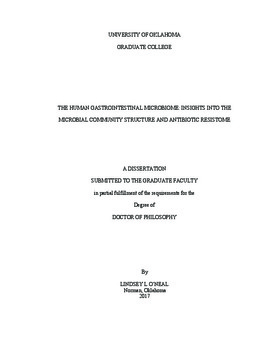| dc.description.abstract | The human gastrointestinal microbiome consists of approximately 10-100 trillion symbiotic microbial cells. Recent advances of molecular based approaches have enhanced the ease and rapidity with which the microbial community structure and function can be analyzed. However, a growing problem is the divide between molecular analyses and cultivation based methods of investigation of this complex microbial system. Cultivation and molecular methods should be utilized complementary. Whole genome sequencing and metagenomic data enable inference of growth conditions of fastidious gut microbes. Investigations of the complex microbial communities of the gastrointestinal tract can greatly benefit from a combination of culture-based and molecular approaches in order to determine function and diversity of the previously uncultured organisms.
Characterization of the gut microbiota has been of particular interest as it has such a tremendous amount of diversity and serves important roles in host health and disease. Data from gastrointestinal microbiome investigations is presented in the following chapters. Here I present research spanning organisms isolated from a Crohn’s disease patient to key species isolated from the microbiome of remote, traditional, indigenous communities (Fig 1). The study of a novel species is especially important when it is an abundant organism with an unknown role within the gastrointestinal tract. Chapter one addresses the characterization of two novel numerically dominant organisms. Investigations of such organisms provide phylogenetic resolution within dominant taxa and insights into their function within the gastrointestinal microbial community. Chapters two and three focus on the isolation and characterization of key species from remote, hunter-gatherer communities. Investigations with traditional, indigenous communities provides a unique opportunity to expand the dataset, which is mainly represented by studies from within industrialized countries. Sampling within traditional communities removes many of the modern cosmopolitan biases. The gastrointestinal microbial ecosystems of traditional Peruvian communities have been shown to be distinct when compared populations from the industrialized world and are more similar to those of ancient samples than those sampled from cosmopolitan groups. In comparison, the gastrointestinal system of Western, cosmopolitan populations have undergone many changes from the ancestral state microbiome. When sampling from traditional communities, changes from the ancestral state microbiome in response to urbanism and Westernization are anticipated. Indeed, such changes, especially the selective pressures from therapeutic antibiotic treatment, provide drivers for antibiotic resistance and thus, the gastrointestinal microbiome may serve as a for reservoir pathogen resistance gene mechanisms. | en_US |
